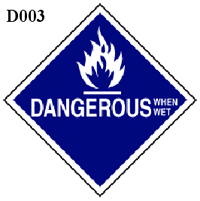(a) A solid waste exhibits the characteristic of reactvity if a representative sample of the waste has any of the following properties:
- It is normally unstable and readily undergoes violent change without detonating.
- It reacts violently with water.
- It forms potentially explosive mixtures with water.
- When mixed with water, it generates toxic gases, vapors or fumes in a quantity sufficent to present a danger to human health or the environment.
- It is a cyanide or sulfide bearing waste which, when exposed to pH conditions between 2 and 12.5, can generate toxic gases, vapors or fumes in a quantity sufficient to present a danger to human health or the environment.
- It is capable of detonation or explosive reaction if it is subjected to a strong initiating source or if heated under confinement.
- It is readily capable of detonation or explosive decomposition or reaction at standard temperature and pressure.
- It is a forbidden explosive as defined in 49 CFR 173.51, or a Class A explosive as defined in 49 CFR 173.53 or a Class B explosive as defined in 49 CFR 173.88.
(b) A solid waste that exhibits the characteristic of reactivity has the EPA Hazardous Waste Number of D003.
Generators may make process knowledge based reactivity determinations by evaluating the established process and raw materials used in the waste generation. If the generator has knowledge that a specific waste would pass or fail sample testing, no testing is required.
40 CFR 262.11(c)(2) |  |

